Marines Vietnam War Richton Park, IL Flight date: 09/21/22
By Al Konieczka, Honor Flight Chicago Veteran Interview Volunteer
George was born in Chicago, but as a young boy, lived in Mexico from the age of 5 to 17 with his mother and step-father; he loved playing soccer. In Mexico, he had a good life with a nanny and housekeeper so he led what he called a privileged life. In Mexico, students only go through grade 11 so George completed all of his schooling in Mexico. High school parties in Mexico always consisted of dancing. His mom was a dance instructor and he learned to dance before he was 12 years old. He had many female cousins who wanted to learn to dance so they always came to the house and he would dance with them.
Just before George turned 18, he “borrowed” the family car for 1 ½ days without permission to go to Acapulco to party with friends and got into an argument with his step-father when he returned home. He left home the next day to hitchhike his way to the border. It took him two weeks to get to the border. He had no papers to cross the border and made up a story about needing to get back to his family and register for the draft. He was finally able to cross the border and when his family in Chicago wired him money, he was able to complete the rest of his journey.
When George got back to the U.S. and settled with family, he began working. As his draft date got closer, he was eager to sign up. As George explained it, “I was about 19 ½ years old and I was nearing my draft date so I went into the Army recruiting office and said, how soon can you get me on a plane? The Army recruiter said about two weeks. So I looked over at the Air Force and then the Navy and I saw the Marine Corps behind them and I said how soon can you get me out? The Army already has all my tests and I already took my physical. The Marine recruiter said I have a flight going out Monday. I said OK, put me on it. I didn’t know anything about the Marine Corps but I signed up for three years.”
George had a buddy from the neighborhood who had also joined the Marines but he went off for Boot Camp a month or so before George. George did his Basic Training in San Diego. After Boot Camp, based on his scoring and mechanical abilities, he went to specialty training with the weapons platoon for two weeks. He was trained on the 106mm M40 Recoilless Rifle, the flame thrower and demolitions, using Composition C-4 (commonly referred to as C-4). From California he flew on a commercial jet to Hawaii, then Okinawa, Japan and finally on to Vietnam.
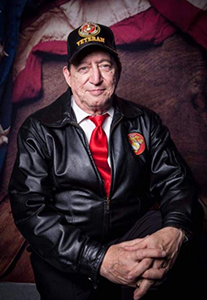
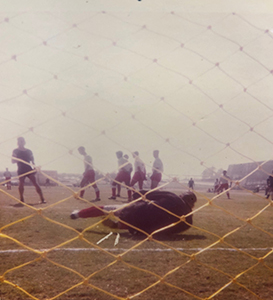
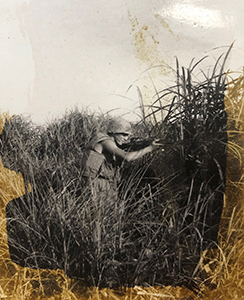
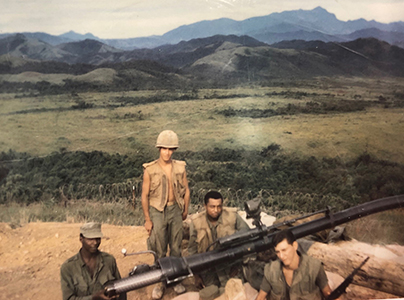
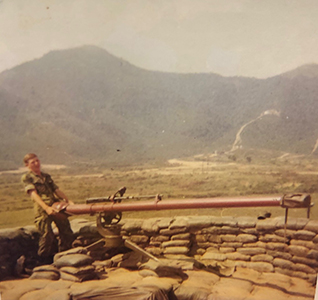
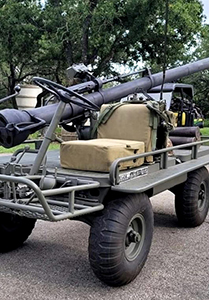
When George arrived in Vietnam, he landed in Da Nang. On his 2nd day in-country, he was sent to the city of Khe Sanh. The first few months George was basically an infantry rifleman because his superiors had not yet had a chance to review his records to see that he had specialized training with weapons. He had already received specialist training as an anti-tank gunner, flamethrower operator and demolition expert. On his first night in Khe Sanh, he was sent to the front lines with no rifle and only six grenades.
George shared one particular incident during his time in Khe Sanh that stands out in his mind. “On February 23, 1968 while attached to the 2nd Battalion 26th Marines, Jimmy Jackson (PFC who was now in my unit after we went through Boot Camp together) and I were on the perimeter when our unit came under heavy mortar and rocket attack. Jimmy was hit by shrapnel, and I had to pick him up and carry him to a Medic Bunker. To this day, I don’t know how badly injured he was or if he even survived.”
George spent three months in Khe Sanh and was there during the Tet Offensive. The Tet Offensive was a major escalation and one of the largest military campaigns of the Vietnam War. It was launched in January, 1968 by forces of the Viet Cong & North Vietnamese Army against the forces of the South Vietnamese Army, the United States Armed Forces and their allies. It was a campaign of surprise attacks against military and civilian command and control centers throughout South Vietnam and had a strong effect on the U.S. government and shocked the U.S. public.
By April of 1968, George’s unit was sent up to break the siege that 3rd Battalion had been under at Hill 881 since January. The designation 881 was based on how many yards high the hill was. George recalled, “Our 2nd battalion became the blocking force in the middle of the ridge trying to get the 3rd Battalion out safely. The soldiers in the 3rd Battalion were down to one cup of water per day because they couldn’t get the supplies they needed. The enemy was tunneled deep on that hill. Our unit finally went up at about 2am and had to clear the hill, hole by hole. Once we got to the top of the hill, the enemy hit us hard with mortar fire from another hill. That was called Operation Pegasus and in the summer of 1968, we received the Presidential Unit Citation for storming that hill and rescuing the soldiers in the 3rd Battalion.” In the Spring of 2022, George learned that the psychologist he meets with on a regular basis at the local VA was actually a member of the 3rd Battalion that George’s unit rescued.
After George’s first 8-9 months in-country, he was given one week’s R&R; he chose to go to Hong Kong. While on standby in Da Nang waiting to go to Hong Kong, he ran into his buddy from back in Chicago who was now an ambulance driver in the medical battalion in Da Nang, and George spent a few days with him before heading off to Hong Kong.
After returning to his unit, George went from Khe Sanh to Camp Carroll and then on to Con Thien (just 3 miles below the DMZ). George explained one of his first assignments was at Con Thien. “In July of 1968 while attached to the 2nd Battalion 26th Marines at Con Thien Marine Base, I was assigned to a Listening Post (LP) outside the barbed wire perimeter with a fellow Marine. There was a lot of Elephant Grass there where we took cover. We were spaced about 50-100 feet apart so we could watch and listen for enemy movement. I was only a Private First Class (PFC) at the time. If you heard something you had two flares, one red and one green. We saw two red dots coming at us (that we discovered was a wild boar) so we popped a green flare and ran back inside the perimeter. The noise caused the enemy soldiers to pinpoint our location and we came under heavy fire as we fled that location. That was a pretty scary night.”
After Con Thien, George was moved to Quảng Trị where he led a battalion landing team. As George described it, “Basically wherever intelligence thought it was hot, they would drop us off, and tell us we’ll be back at some point to pick you up. We would be out there for 3-4 weeks. That’s also really the only time I used my flamethrower to burn some of the brush away so at night we didn’t have anyone walk right up to us. There was no perimeter, so we had to constantly be on guard. As a combat Marine, there was no ‘safe zone’ – you were always close to death and could be killed at any time.”
As a demolitions expert, George shared a trick he learned using C-4 to heat their food. “I would take a small amount of C-4, about the size of a nickel and roll it into a ball. Put the ball into a can of C-Rations with a couple holes poked into it and light it. We would clean out our helmet, fill it with food and put it on top of the can. Without using a blasting cap, it gives out an extreme amount of heat in a short period of time with no explosion. We also used that same trick to dry out our tent or bunker.”
George’s battalion landing team had a 106mm M40 Recoilless Rifle as its primary weapon. The 106 is a breech-loaded, single-shot, portable, recoilless rifle and can be used in both anti-tank and anti-personnel roles. The rifles are very long, very heavy and very loud. George still suffers from tinnitus to this day because ear protection was never provided. George said they would just cover their ears with their hands and fire the 106 using their elbow. The guns were 268 inches long and they used mules to transport them. The mule was used primarily by airborne and infantry battalions.
George’s time in-country has had a lasting impact on him and affected him throughout his life. On George’s third tour to Vietnam, he stopped off in Da Nang and again visited with his buddy from Chicago. George had an experience at that time that still haunts him to this day. “My buddy hands me a shotgun and says, here ride shotgun with me – we need to pick up some wounded on the other side of the hill. We picked up four guys and brought them back to the MASH Quonset Hut. When I walked in there, I remember seeing approximately 50 beds that were filled by seriously injured fellow comrades. There were patients screaming, doctors and nurses screaming and the one thing I’ll never forget is the smell of burnt flesh. It’s an experience I would never want to go through again.”
By March 31, 1970 George was back at Camp Pendleton, CA being discharged from the Marines only a week after being in combat in the jungle. He didn’t really want to go back to Chicago because he feared he would get in trouble. So he got a job at a warehouse in Glendale, California and did that for 35 days. George then re-enlisted May 7, 1970 and signed up for another 3 years but got out early in 2 ½ years. He spent the first 45 days doing jungle training in Panama before heading back to California to finish out his term. George even played soccer for nine months for the Marine Corps all up and down California. They played mostly against college teams. He had played for 12 years as a kid in Mexico as a goalie. He simply tried out with the team, was transferred to that unit and played one full season with them.
Before he shipped out to Panama, he met a young girl named Lonnie, whom he thought was 18, but who was actually only 16 years old. Five weeks later they were married on June 11, 1970. They remained married for 47 years until she passed away in 2018. He has two sons and six grandchildren. He worked a variety of jobs over the years but has spent the last 38 years working at various car dealerships, mostly with Ford.
Altogether, George served in the Marines from August 1967 to December 1972 with three tours to Vietnam. He earned a number of awards, medals, honors and certifications during his enlistment. He is very grateful for his time in the Marines and is looking forward to his Honor Flight!
George, we thank you for your years of courageous and dedicated service to our country. Enjoy your well-deserved day of honor on the 105th flight of Honor Flight Chicago!


